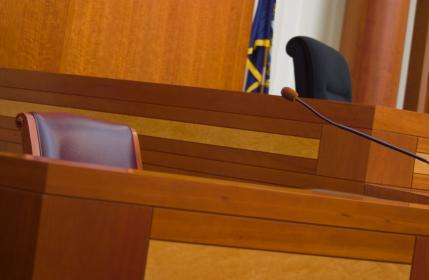
I’ve always thought “bad” behavior was as good a teacher, if not a better one, than good behavior. This is no less true in the world of insurance coverage analysis than in other endeavors. With that in mind, here are five things insurers DO NOT want from their outside coverage counsel. They are instructive guideposts for insurers on what to avoid when working with outside coverage counsel.
Starting With An Answer And Working Backwards
This should be as self-evident as it is lethal — insurers are looking for what coverage counsel thinks, not what coverage counsel thinks the insurer wants them to think. Insurance coverage lawyers are sought out for coverage analysis because they are knowledgeable, trusted, and above all else, independent advisors. Insurers look to coverage lawyers who produce deliverables which are the product of thoughtful analysis of the policy language, the claims investigation and the facts, and the applicable jurisdictional statutory and/or common law.
I am grateful that in three decades of practice I have never had an insurance company client ever tell me, or even hint at, what they wanted me to conclude. This is not to say that I, and they, never have very early “gut reactions” or hunches as to what the answer to a coverage question might be. It is to say, however, that such early hunches have no place directing or determining the final work product. A “hunch” is fine, as long as it is kept in its place, and put through rigorous analysis and research which results in a final opinion. A hunch might be right, and it might not. What is important is that it is not exalted to the status of an answer without the necessary legwork and toil which tests and challenges it.
The “answer” to a coverage question should always be the result of coverage analysis, never the cause or the governor of it. Enough said.
Delay
The fog and smoke and fast pace of the insurance claims business makes for considerable uncertainly and unpredictability in terms of when insurance coverage questions might even arise, and, more importantly, when answers to those questions might be required. An insurer, for example, may be under the gun to make a decision to enter a defense of an insured, and to get a pleading filed ahead of a deadline.
Because of that, it is important that the insurer and coverage counsel be on the same page from the initial consult about when an answer to a coverage question is required. It may be a matter of days, or it may be a matter of weeks. What is important is that both the insurer and coverage counsel are working off of the same timetable as to when the final work product needs to be furnished.
Can unforeseen circumstances impact the delivery date of a coverage opinion? Of course they can (see fog, smoke, and unpredictability above). As soon as such difficulties arise, however, the insurer must be advised. Extensions to file answers to pleadings in underlying litigation, for example, can be secured, to provide some additional breathing room.
Insurers want to know when they will have an answer to a coverage question, and they don’t want to have to harangue coverage counsel for an overdue work product. The “when” of a coverage analysis must be the product of initial, and ongoing consultation between the insurer and coverage counsel.
Surprises
I have never had an insurer thank me for bad news. However, I have had insurers thank me a number of times for delivering bad news as early and as clearly as possible, along with suggestions and options which might lessen the impact of “bad” news relating to a coverage opinion. There is a lesson here, for certain.
Whenever possible, I like to schedule a quick status call with a client halfway between when a coverage opinion is requested, and when it is to be delivered. This provides a built-in early warning mechanism if a coverage question might be heading in a direction not originally anticipated, or if some development in claims investigation necessitates an answer which is not what might have originally been expected. (Better still, it is also a great opportunity to advise the insurer that there are as of yet no surprises).
Time is a gift. Coverage counsel should strive to give as much of it as possible to the insurer, especially if there is unexpected news. Almost by definition, the earlier a surprise is delivered to the insurer, the less of a surprise it becomes.
Incidentally, this proposition is equally true if unforeseen circumstances may require additional expense to the insurer, such as additional claims file or investigative materials which need to be reviewed before the final work product is provided. Insurers want to know sooner rather than later, and their first notice of unexpected expense should never, ever, be on an invoice.
Murkiness
If an insurer wanted to hear an overly general “maybe/maybe not” or excessive hedging on a coverage opinion, it could have saved itself the cost of an outside coverage opinion altogether and come to the same conclusion itself for free. It is true, of course, that coverage analysis is not an exact science. However, insurers do not want murkiness or generalities in the coverage opinions they request and obtain. They want guidance. And the art of guidance requires as much clarity as possible.
How is murkiness in coverage analysis to be avoided? Thoroughness is the first touchstone: A thorough analysis is much more likely to move coverage counsel off of the dreaded 50/50 opinion on outcome than is a cursory one. A complete and detailed review of the claims facts, the policy, and applicable law (including law from other jurisdictions if there is no law directly on point in the jurisdiction of assignment) is far more likely to get experienced coverage counsel to an expression of one likelihood versus another.
Likelihood and probability are far more useful to an insurer than a coin flip. At the end of the day, coverage counsel is expected to express a coverage opinion, not a coverage coin flip. A position must be taken, even if that position expresses probabilities, ranges of probabilities, and identifies “known unknowns” and even “unknown unknowns” which could affect the assessment. Follow up or supplemental coverage opinions can be provided, which leads us to our last black flag.
Lack of Follow Up / Follow Through
A coverage opinion is oftentimes non-static. That is, there may be variables which might not yet be filled in by the current claims investigation or facts not yet known which could have an impact on coverage counsel’s opinion. I never finish a coverage opinion without reminding/inviting the insurer for whom I am working to reach back out and advise if any additional facts have come to light which may change the coverage opinion in some way.
I also typically make at least one follow up call to my insurance company clients following the coverage opinion for this purpose, and also to make sure that there is nothing else they might require. For example, would they like some guidance as to a declination or reservation of rights letter? Should an examination under oath on a pivotal issue be taken? Would the insurer like guidance on the possible plusses and minuses of pursuing a declaratory judgment? In addition to being good business, such follow up is, more importantly, good client service.
Conclusion
In the final episode of the 1994 season of Seinfeld called “The Opposite,” the hapless yet somehow lovable George Costanza stumbles upon unfamiliar success by rejecting every instinct he has, and doing the opposite of what those instincts tell him. Insurers who seek out the opposites of the five black flags identified above from their coverage counsel will secure greater value in the coverage advice they obtain.
Additional Resources
- For additional guidance to insurers on getting better, bulletproof coverage opinions, look here and here.
- For additional guidance to insurers on whether to file declaratory judgment actions, look here.









